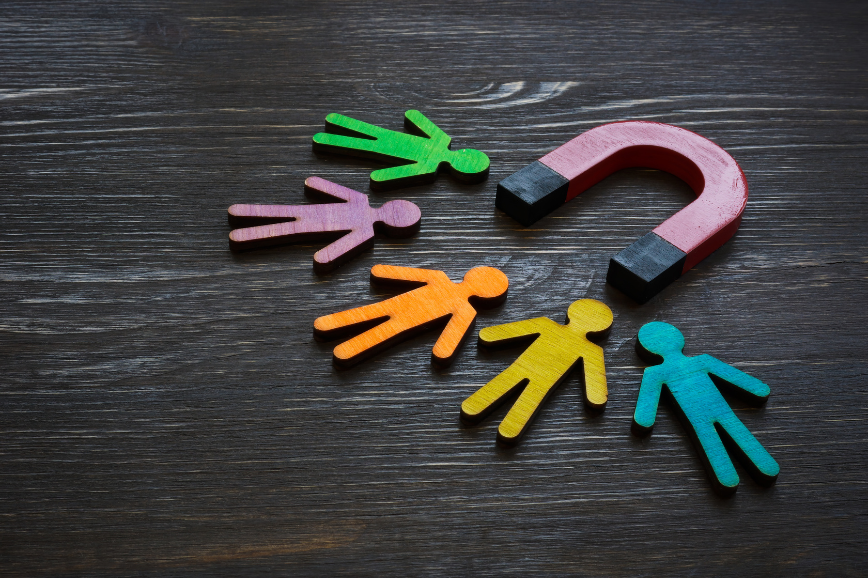Human vs AI: Why Storytelling Still Wins in Modern Marketing

The surge of Generative AI mirrors past shifts, such as the automation of customer service (i.e. AI chatbots) or the rise of programmatic ad buying. These technological developments changed the game but didn’t erase the need for human insight.
Blogs, emails, ad copy, product descriptions — you name it, conversational AI chatbots, such as ChatGPT, can generate them in seconds. It’s fast. It’s scalable. And most of the time, it works pretty well. But it still needs a human to edit and fact-check the content.
But there’s a fundamental truth every savvy marketer understands: it’s not just words that make people care. It’s stories. And this is exactly where AI hits its limit. Sure, AI can create content that looks and sounds impressive on the surface, but does it truly grasp the human emotions behind those words? Does it understand what moves us, inspires us, or connects us?
As powerful as AI has become, it’s not replacing authentic human storytelling anytime soon. In a world overflowing with algorithm-driven content, authentic storytelling is becoming a rare and valuable edge — one only humans can truly deliver.
Let’s dive into why that is.
The Rise of AI Content: A Double-Edged Sword
In recent years, AI-generated content has seen a significant rise, and a number of tools have revolutionized this new era of writing.
AI writing tools can rapidly produce large volumes of content, mimic diverse writing styles, and synthesize information from vast datasets, enabling marketers and creators to speed up routine tasks and draft ideas more efficiently.
Reports suggest that 62% of marketers use AI tools for content creation, highlighting the growing reliance on AI in the industry. AI can certainly accelerate content production, but faster doesn’t always mean better — especially in marketing, where quality often outweighs quantity.
While AI excels at generating content through pattern recognition and statistical prediction, it lacks accurate understanding. It doesn’t comprehend the meaning behind the words it creates or the emotions they’re meant to evoke. And that’s the core limitation.
What Storytelling Truly Means
From ancient cave paintings to TikTok trends, humans are hardwired to respond to narrative patterns. It’s how we make sense of the world. Unlike data, stories invite the listener in. They create space for empathy, relatability, and imagination.
Studies show that stories are up to 22 times more memorable than standalone facts, making narratives an ideal way to imprint your brand in consumers’ minds. When you embed numbers inside stories, listeners retain around 65–70% of the information, compared to just 5–10% when they are presented as standalone facts.
This emotional resonance directly drives business results: brands that use storytelling see a 30% boost in conversion rates, 20% higher customer loyalty, and even a 30% increase in perceived value for their products.
Authenticity plays a central role — 86% of consumers say that authenticity influences the brands they support, while 64% demand an emotional connection with the brands they choose.
Storytelling isn’t mere embellishment; it’s scientifically proven to enhance recall, build trust, and inspire action in ways that raw facts simply can’t. For marketers, mastering the art of storytelling is no longer optional; it’s critical.

4 Reasons Why AI-Generated Content Misses the Mark — And How Humans Fill the Gap
As powerful as AI is, there are simply some things it cannot do. While it may have a “brain,” countless complex concepts remain far beyond its reach. Unlike machines, humans bring a nuanced understanding of storytelling that goes beyond word generation. While machines can generate words, only humans bring the emotional depth, cultural awareness, and ethical reasoning that make stories feel authentic, relatable, and impactful.
1. Lack of Genuine Emotion, Empathy & Adaptiveness
Consider the Coca-Cola AI ad controversy. It tried to capture the nostalgia of their iconic 90s ad but missed the mark. While it can sometimes use the “right” words to mimic emotional tone, it doesn’t understand the why behind them. That gap matters, especially in marketing.
In today’s fast-moving digital space, human storytellers constantly monitor audience reactions and adapt in real-time. During a social media backlash, for instance, marketing teams can quickly pivot their tone by offering sincere apologies, clarifying misunderstandings, or spotlighting positive stories to rebuild trust. This kind of responsiveness requires emotional intelligence, cultural sensitivity, and strategic thinking — skills AI can’t replicate. Human adaptability ensures brands stay connected and credible amid ever-evolving conversations.
Consumers can sense when something is emotionally authentic versus when it merely appears to be so. True storytelling requires not just expressing emotion, but also responding to it in a way that shows understanding and care.
For example, AI-generated product descriptions may list features well, but they often fail to capture the emotional relief or joy a user feels when the product actually makes a difference in their life.
2. No Personal Experience or Perspective
Stories gain power from perspective. A founder’s struggle through startup failures, a parent’s reflection on raising a child during a pandemic — these aren’t just facts. They’re infused with memory, meaning, and personal transformation.
AI lacks any lived experience. As a result, its narratives often feel detached or overly generic, like they’ve been assembled rather than felt.
For example, human marketers share stories about how products fit into real customer lifestyles, such as an athlete’s journey with new running shoes, which adds credibility and authenticity that AI-generated, generic use cases can’t match.
This is where human creativity shines. We don’t just retell what’s been done; we experiment with humor, irony, and unexpected metaphors that spark curiosity. A brand launching a disruptive product might use bold humor or interactive formats — like quizzes or choose-your-own-adventure videos — to create experiences that captivate. These creative leaps are born from intuition and cultural awareness, which AI can’t predict or invent. By embracing risk, human storytellers create memorable moments that linger long after the campaign ends.

3. Lacking Morality, Meaning, and Relationship-Building
The best narratives don’t just inform, they question, challenge, inspire, and reflect our collective ethics. A powerful campaign can spotlight inequality, advocate for sustainability, or shift public attitudes. Because a human chose to tell that story with intention.
By contrast, AI lacks a conscience. It can mimic moral language, but it doesn’t stand for anything.
For example, brands committed to sustainability often use storytelling to communicate their values and the ethical choices behind their products.
Storytelling is not a one-off event; it’s a long-term relationship. Marketers understand that establishing a brand personality requires consistency and thoughtful evolution. They know when to stick to core values and when to adapt. A company might share behind-the-scenes product development stories, spotlight employee voices, or feature customer testimonials. These real, ongoing narratives build trust and emotional investment — turning customers into advocates.
4. Difficulty with Cultural and Contextual Themes
Stories don’t exist in isolation; they live within culture. The tone, humor, symbolism, and even word choice that works for one audience might completely miss the mark with another. They can adjust their voice and message to meet people where they are.
AI may reproduce stereotypes, misread cultural references, or fail to grasp the emotional temperature of a moment. And in an era of heightened cultural awareness, that can have real reputational consequences.
For example, launching a product in a diverse international market requires tailored messaging that respects local customs and languages. Human marketers excel at tailoring campaigns with nuance, avoiding tone-deaf mistakes and connecting in culturally relevant ways.
Today’s best campaigns often weave together complex themes, such as product innovation, social responsibility, and emotional relevance, into cohesive stories. Human storytellers interpret these layers and craft messages that resonate on multiple levels. A tech company might promote a new device by highlighting its cutting-edge features, the ethical sourcing of its materials, and the positive impact it has on users’ lives. Balancing these dimensions requires empathy, judgment, and creativity — qualities that machines simply can’t replicate.

Finding The Best of Both Worlds
Think of AI as GPS, great at providing directions, but humans are the drivers who choose the destination, speed, and stops along the way.
AI excels at automating the tedious aspects of the content creation process — it can analyze vast datasets, draft outlines, suggest relevant keywords, generate content variants, and optimize for both SEO and readability. These strengths free up time and mental space for creators, allowing them to focus on higher-order storytelling.
This collaboration can be especially powerful in marketing, where deadlines are tight and expectations are high. For instance, a content strategist might use AI to help develop ideas and utilize it as a research tool to understand why customers might need the product.
When used thoughtfully, AI can be the assistant, never the author. The goal isn’t to replace human creativity but to amplify it, unlocking greater efficiency without losing what makes stories meaningful. In this hybrid model, AI accelerates the how, while humans define the why. And that’s where the magic happens.
Final Thoughts: What Makes GeistM Different
At GeistM, our mission isn’t just to create content; it’s to create authentic conversations that lead to action. In a world where AI-generated copy is becoming increasingly common (and often indistinguishable), we take a different approach: every piece of content we deliver is crafted by our exclusive, in-house content team. These aren’t generic blog posts; they’re original, thoughtfully written assets designed to serve a specific purpose, resonate with a distinct audience, and align seamlessly with campaign goals.
What sets us apart is the human intelligence behind every word. Our expert storytellers understand not just what to say, but how, when, and where to say it. We tailor each content asset not only to the campaign’s core objectives, but also to the platforms on which it will live. It’s about voice, value, and vision.
That’s the GeistM edge: we don’t just use storytelling as a tactic — we use it as our core strategy. Because when content is built by humans, for humans, it doesn’t just inform; it influences and drives results.
Ready to create content that actually connects? Let’s build something unforgettable together. Reach out to GeistM today.






